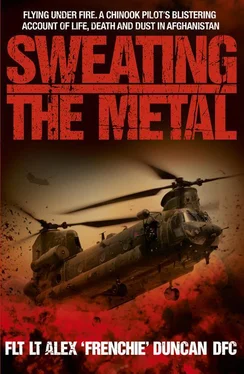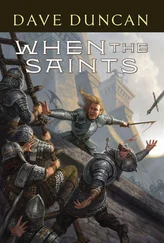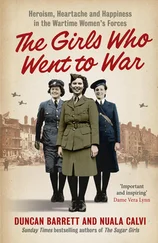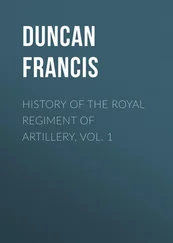Its remarkable beauty belies an incredibly violent past, although the signs are there if you look carefully enough. The minefields laid by the Soviets delineate the surrounding countryside and are as deadly a threat now as when they were laid. But the most chilling element of the Kajaki complex is a building just outside the perimeter known as the Russian House.
When the Soviets retreated towards the end of the war, a detachment of young soldiers who had been holding the strategically important dam were cut off. They fought wave after wave of attacks by Mujahideen fighters, but eventually they ran out of ammunition and were overrun. The Afghan fighters broke through the barricades to the ground floor and brutally butchered the soldiers they found there; it’s said that they were flayed alive while their friends and colleagues upstairs had to endure the agony of their screams. It’s thought that those upstairs were fed into the fans of the turbine. The walls, ceiling and doors bear witness to the last few bitter, desperate hours of the fight, pockmarked and scarred with scores of bullet holes and shrapnel damage.
These days, the handful of defenders at Kajaki enjoyed a miserable existence thanks to the Taliban’s regular mortar attacks, and the ANA were starting to get jittery. My first run-up to the dam came about when I was on the IRT and we got a call to pick up an ANA soldier with a minor bullet wound. The flight from Bastion to Kajaki takes about half an hour or so. Once we were across the Desert North of Bastion, we’d transition to height and fly over the Green Zone, which is quite stunning when viewed from altitude. The Helmand River snakes across the landscape and a sea of green radiates from its banks to a distance of about 10km or so – lush, verdant vegetation and crops. The locals and Taliban both depend on it. But either side of the Green Zone lies arid desert – a flat nothingness.
Shortly after leaving the Green Zone behind, the route takes you through the Sangin Valley, and it’s around here that the topography starts to change. Suddenly, sharp crags appear as the valley floor rises up to a series of vertiginous peaks. The ground looks barren and dry, a canvas of ochre, beige and sand as far as the eye can see. Suddenly, the landscape changes dramatically and you’re confronted with the majestic beauty of Kajaki Lake. The colour of the water – a rich, vivid aquamarine that changes from a deep emerald to turquoise, depending on the position of the sun – takes your breath away and is perfectly framed by what appear to be luscious sandy shores. If they ever get the security situation in Afghanistan squared away, Kajaki would make the perfect holiday destination. There’d be no shortage of ex-RAF aircrew wanting to set up jet-ski schools on the lake.
You drop down low as you turn on finals for either of the two bases at Kajaki – Broadsword and Lancaster – and with the sun high in the sky, you get a perfect shadow of the aircraft below you in the water. It’s a tricky run in – there are a lot of wires to negotiate, a sharp descent downhill as the land falls away beneath you, and a ruined crane (another hangover from the Soviet occupation) to avoid. It requires some highly technical, precision flying; otherwise you could find yourself too high and too fast, with the aircraft literally running away from you in the latter stages.
The ANA we picked up on that first sortie had a highly suspect bullet wound to his foot and he became the first of many. With the Taliban subjecting the defenders to a nightly barrage of mortar fire, I think that some of the ANA decided that some self-inflicted minor gunshot wounds were just the thing to get them a break from the action. Either that, or their weapons hadn’t been zeroed in years and the sights were way, way out of line.
Eventually, Col Tootal would have to find the numbers from within 3 Para to properly man the bases at Kajaki, but that was a few weeks away at this stage. At the time, he simply didn’t have sufficient men to provide a company, so he came up with what was quite an audacious and effective plan to neuter the threat from the Taliban mortar team.
A small force of two mortar teams, a platoon of infantry and a machine-gun section was hastily assembled and smuggled into the base under cover of darkness. Then they waited for the Taliban’s next barrage of fire. They didn’t have long to wait. Once the force had been fired on, they returned fire and their salvo landed directly among the Taliban mortar team that only a few minutes previously had sought to cause death and destruction among the men defending the dam. Several of the Taliban were killed outright, with many wounded. A few of the survivors sought refuge in a reed bed along the banks of the River Helmand, but they ran right into the sights of the machine-gun section, which quite happily opened up on them. Those who weren’t cut straight down by the barrage of 7.62mm rounds ran straight out into another salvo of mortar rounds from the team. When the firing stopped, twelve Taliban fighters lay dead and several others lay severely wounded. They’d been caught with their trousers down and 3 Para made them pay the ultimate penalty. The attacks against the base stopped and for a period of several weeks the small force defending Kajaki had room to breathe. By the time the Taliban had regrouped, Col Tootal had deployed ‘A’ Company, 3 Para to defend the base. The Taliban’s days of free rein around the dam were at an end.

I called Alison for a chat at the end of May and she answered the call with the news I’d been waiting for: ‘We’re having a boy!’ She’d been for a scan and we were going to have a son. I was ecstatic; from that moment on, my world changed irrevocably. Every day became about survival – even more so than before. Surviving each day so that I’d be able to fly home and watch my wife give birth became the ultimate focus for me. When I put the phone down, I could barely contain myself. I ran straight to the crew tent where Woodsy, Craig and Nichol were kicking around.
‘It’s a boy!’ I shouted, to which, almost to a man, they said, ‘Oh, has she given birth then?’ Morons!
12
POKING THE HORNETS’ NEST
Operation Mutay was 3 Para Battle Group’s first major pre-planned operation since deploying to Helmand Province. Its aims were simple: a cordon and search op focused on a mud-walled residential compound about 3km east of Now Zad, in an area consisting of dense orchards, irrigation ditches and inter-connected walled compounds.
Intelligence indicated the compound was the base for a Taliban High Value Target (HVT). It was thought it was being used as a weapon and ammunition dump, bomb-making facility and safe house for insurgent commanders all rolled into one. The intel also suggested that the majority of the Taliban HVT’s fighters had melted away following the arrival of British troops in the Now Zad DC. The intel was wrong.
We knew something was afoot on June 3rd, the day before the operation was planned, because there was a lot of coming and going and all the Flight’s captains kept disappearing. Nichol Benzie finally briefed us later that evening; we received our orders for the operation, which would turn out to be one of the defining battles of the Paras’ tour, with a six-hour firefight that involved almost everyone.
The plan involved a hundred or so men, encompassing 3 Para’s ‘A’ Company and Patrols Platoon and a platoon of the Royal Ghurkha Rifles, together with some Afghan National Police. The Ghurkhas were based with the ANP in Now Zad District Centre so they, together with Patrols Platoon, were tasked with moving forward and establishing an outer perimeter. Our role was to insert ‘A’ Company into the compound, which they would then assault and capture. Air support would be provided by the Army Air Corps Apaches together with A-10 Warthogs and B-1 bombers from the US.
Читать дальше













